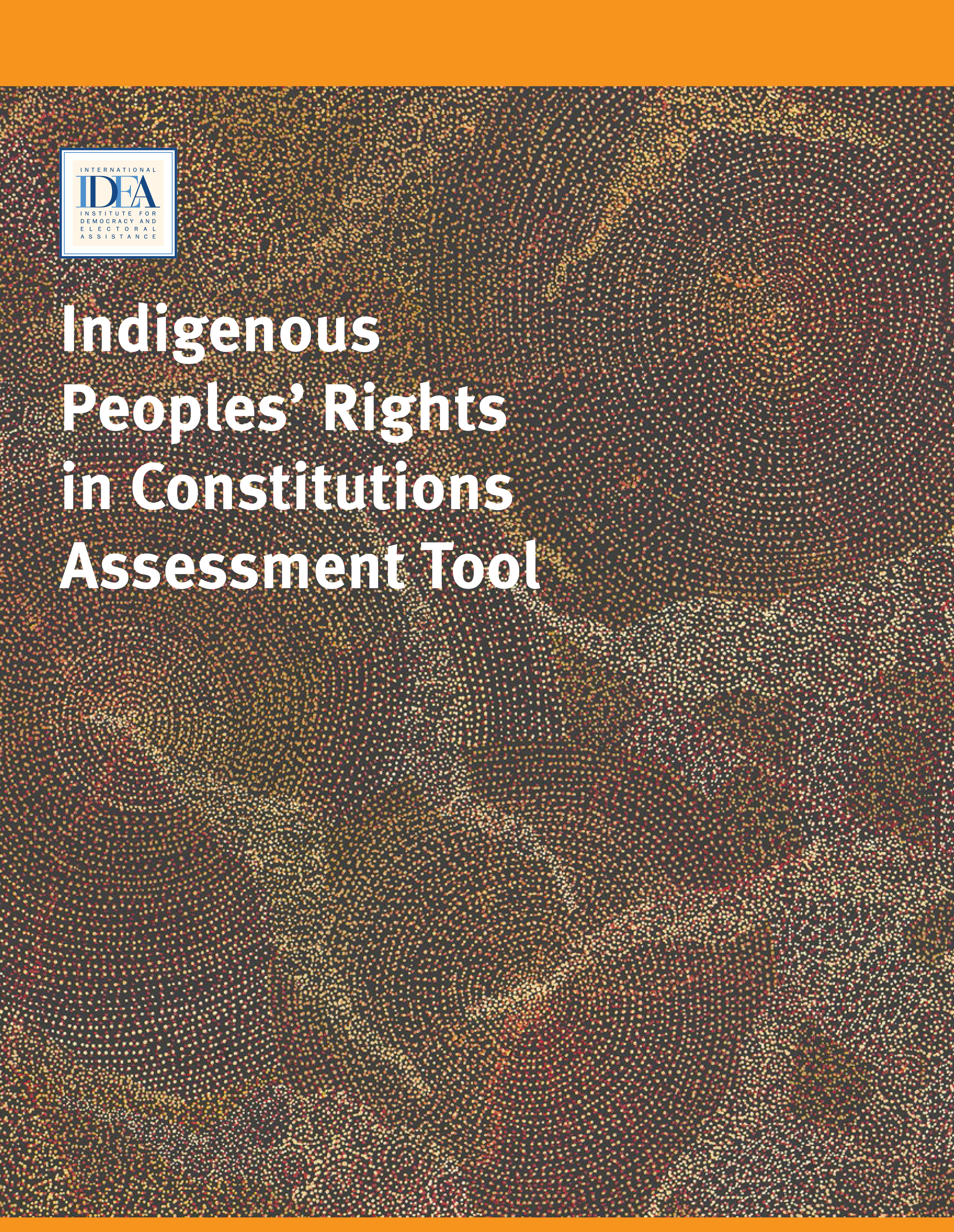Indigenous Peoples’ Rights in Constitutions Assessment Tool

အခြေခံဥပဒေပါ ဌာနေတိုင်းရင်းသားများ ရပိုင်ခွင့်ကို ဆန်းစစ်လေ့လာနည်း သည် ဖွဲ့စည်းပုံအခြေခံဥပဒေ၊ ဖွဲ့စည်းပုံအခြေခံဥပဒေမူကြမ်းနှင့် ဖွဲ့စည်းပုံအခြေခံဥပဒေဆိုင်ရာ မွမ်းမံပြင်ဆင်ချက်တို့ကို ဌာနေတိုင်းရင်းသားလူမျိုးများ၏ အခွင့်အရေးများရှုထောင့်မှ သရုပ်ခွဲလေ့လာမည့်သူများအတွက် အသုံးဝင်မည့် စာအုပ်ဖြစ်ပါသည်။ မေးခွန်းစဥ်များ၊ အတိုချုပ်ရှင်းပြချက်များအပြင် နိုင်ငံတကာ ဖွဲ့စည်းပုံအခြေခံဥပဒေများမှ ပြဋ္ဌာန်းချက်များကို သာဓက အသုံးပြုထားသည့်အတွက် ဤစာအုပ်ကို အသုံးပြုသူများအနေဖြင့် သက်ဆိုင်ရာ ဖွဲ့စည်းပုံအခြေခံဥပဒေပါ ပြဋ္ဌာန်းစာသား၏ အသုံးအနှုန်းနှင့် ပြဋ္ဌာန်းချက်များတွင် ဌာနေတိုင်းရင်းသားလူမျိုးများ၏ အခွင့်အရေးများကို မည်မျှခိုင်ခိုင်မာမာ ထင်ဟပ်ဖော်ပြထားသည်ကို ဆန်းစစ်လေ့လာနိုင်ကြမည်ဖြစ်ပါသည်။
The Indigenous Peoples’ Rights in Constitutions Assessment Tool helps users to analyse a constitution from the perspective of indigenous peoples’ rights. Using a series of questions, short explanations and example provisions from constitutions around the world, the Assessment Tool guides its users through the text of a constitution and allows for systematic analysis of the language and provisions of a constitutional text to assess how robustly indigenous peoples’ rights are reflected in it.
A constitution articulates a vision that reflects a state’s values and history, as well as its aspirational objectives for the future. As the supreme law of a state, the constitution defines its structure and institutions, distributes political power, and recognizes and protects fundamental rights, critically determining the relationship between citizens and governments.
Embedding in a constitution recognition of and rights-based protections for specific groups, such as indigenous peoples, can give these groups and their rights enhanced protection. This can be furthered by providing for specialized institutions and processes to deepen the realization of those rights in practice.